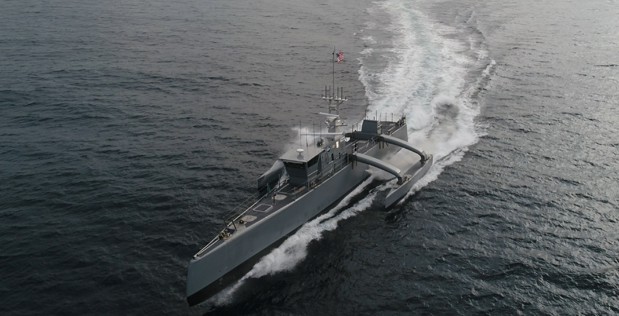
Developed through the agency’s Anti-Submarine Warfare (ASW) Continuous Trail Unmanned Vessel (ACTUV) program the boat - christened Sea Hunter - is at the heart of efforts to develop a new type of unmanned surface vessel (USV) that would autonomously track enemy submarines over thousands of miles at a fraction of current costs.
The technology has undergone a series of tests in recent months to ensure that it complies with international regulations for preventing collisions at sea and also to evaluate its potential to carry out a range of different missions. For instance, in August 2017, the vessel conducted at-sea tests with a mine countermeasure (MCM) payload.
Back in 2016 Sea Hunter also had a successful joint test with DARPA’s Towed Airborne Lift of Naval Systems (TALONS) research effort, which is exploring the use of a towed parafoil to enable vessels to see over the horizon.
In a move that ushers the vessel closer to active service, it will now be further developed by the US Office of Naval Research (ONR). “ACTUV’s move from DARPA to ONR marks a significant milestone in developing large-scale USV technology and autonomy capabilities,” said Alexander Walan, a program manager in DARPA’s Tactical Technology Office (TTO).
https://www.youtube.com/watch?v=wqb4xzhd40w
Eventually expected to be able to traverse thousands of kilometres over open seas for months at a time, without a single crew member aboard, Sea Hunter could ultimately replace the need for larger manned warships, said Fred Kennedy, director of DARPA’s Tactical Technology Office. “ACTUV represents a new vision of naval surface warfare,” he said. “The U.S. military has talked about the strategic importance of replacing ‘king’ and ‘queen’ pieces on the maritime chessboard with lots of ‘pawns,’ and ACTUV is a first step toward doing exactly that.”
ONR now plans to carry out additional at-sea tests to further develop the vessel, including exploring autonomous coordination among multiple USVs. If these tests are successful, DARPA claims the vessel could enter service this year (2018).




Report highlights significant impact of manufacturing on UK economy
I am not convinced that the High Value Manufacturing Centres do anything to improve the manufacturing processes - more to help produce products (using...